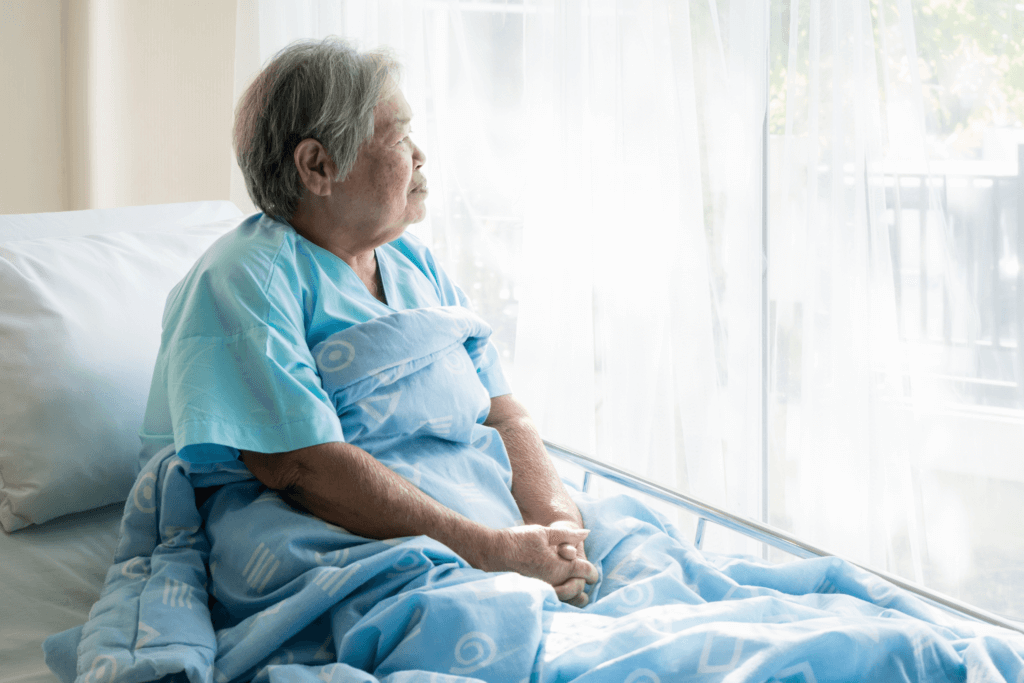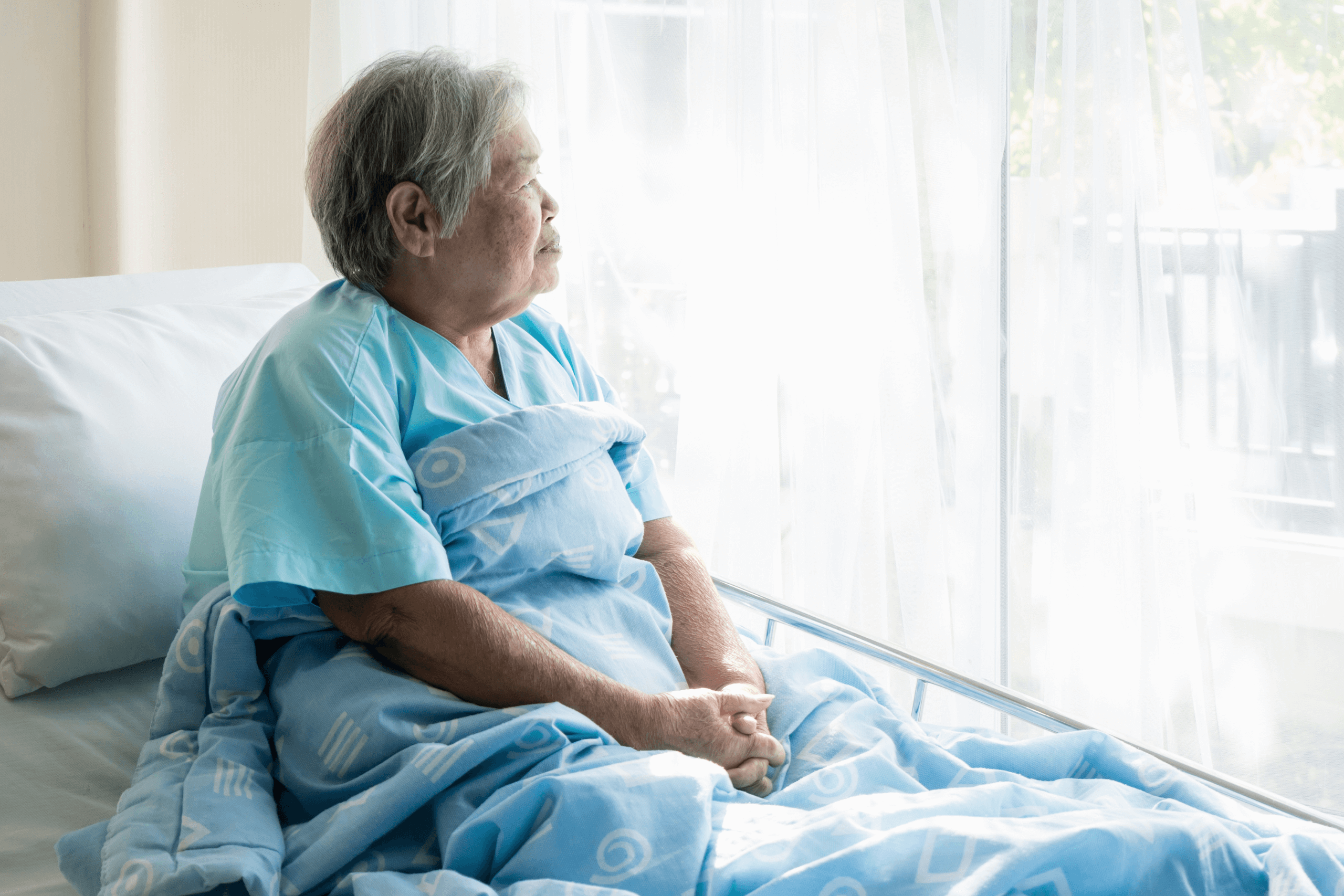
A person who develops a bedsore while under the supervision of a healthcare facility like a nursing home may be entitled to file a lawsuit to recover damages. The overwhelming majority of lawsuits arising from bedsores fall under negligence lawsuits, but some are litigated as medical malpractice. Not surprisingly, hospitals and nursing homes are the two most common defendants in these cases.
If an immobile person does not receive adequate care while under the supervision of a healthcare facility, including being positioned correctly in the bed, being turned over from time to time, and given good nutrition and skin care, bedsores (also known as pressure ulcers or pressure sores) can develop. If left untreated, bedsores can become painful and infected. Frail, older adults are especially susceptible to bedsores.
According to Title 42 of the Code of Federal Regulations, a person in a nursing care facility has a right to proper skin care. Therefore, a facility has a duty to its residents to ensure that they do not develop this condition. If they do, their duty is to take all steps necessary to treat it as promptly and as effectively as possible. Depending on the severity of the injury, a person suing a medical care facility for bedsore negligence can recover upwards of hundreds of thousands, even millions of dollars.
There were 496 medical malpractice lawsuits filed in New Jersey in 2022, with $215.41 million recovered in total, averaging around $434,000 of damages per case.
Factors That Affect Settlements
The settlement of a bedsore claim is dependent on several factors, reflecting the fact that no two cases are alike. Each is unique with causes and outcomes affected by specific circumstances. Important factors that will be considered are the extent of the injury, in terms of both emotional and physical pain suffered, the amount of medical care required to adequately treat the bedsores, any lasting damages that the bedsore would have, and the age of the patient.
One of the primary considerations for determining the severity of the injury is assessing the stage of the bedsore, as the more advanced the stage, the lower the chances for complete recovery from the wound(s), and the higher the settlement amount will likely be. The later the stage, the easier it is to make a case for negligence on part of the health care facility, but even less severe cases may lead to a successful claim.
Many cases get resolved out of court. The reason most cases will not go to trial is because both parties prefer to avoid a lengthy, expensive, and uncertain trial process. Your attorney will negotiate directly with the other side, or a third party can be appointed – called a mediator – to help facilitate discussions. An insurance company will likely be involved because hospitals and nursing homes typically carry insurance specifically for these kinds of lawsuits. The general rule is that the faster you settle, the lower your settlement amount, highlighting the importance of being patient during negotiations.
If parties cannot come to an agreement, the lawsuit proceeds to trial, where the jury will ultimately decide the total amount of damages that will be awarded based on the case presented. That amount can only be overturned if the court believes that it is unreasonable based on what similar cases have awarded in the past.
Stages of Bedsores
According to Johns Hopkins, there are four stages of bedsores:
- Stage 1. The area looks red and feels warm to the touch. With darker skin, the area may have a blue or purple tint. The person may also complain that it burns, hurts, or itches.
- Stage 2. The area looks more damaged and may have an open sore, scrape, or blister. The person complains of significant pain and the skin around the wound may be discolored.
- Stage 3. The area has a crater-like appearance due to damage below the skin’s surface.
- Stage 4. The area is severely damaged and a large wound is present. Muscles, tendons, bones, and joints can be involved. Infection is a significant risk at this stage.
What Is Recoverable in a Bedsore Settlement?
Typically, there are three forms of damages available to the plaintiff (the party suing). These are:
Economic Damages
Economic damages refer to out-of-pocket losses, such as medical bills associated with treating the injury, surgery, etc. These are related to the patient’s physical injuries, and courts will consider the bedsore’s severity and the number of bedsores that developed on the body.
Non-Economic Damages
Non-economic damages refer to the amount of conscious pain and suffering (past and future) inflicted on the injured party or the death of the patient. Courts will calculate the total length of time that the person suffered from the bedsore(s), which could range from as little as several months to several years. If the patient died as a direct result of the condition, the surviving spouse can sue for loss of companionship, which is usually brought under a wrongful death claim.
Punitive Damages
Punitive damages are rare and usually only awarded in cases of egregious misconduct, such as willful or reckless disregard for the patient’s well-being.
Examples of Bedsore Settlements in New Jersey
The circumstances surrounding every bedsore case are different. For this reason, you should always consult with an attorney to discuss the details of your specific experience so that they can assess whether you have a viable case and, if so, the best strategy for achieving maximum compensation. Rosenblum Law has successfully negotiated settlements for its clients in wrongful death lawsuits arising from neglect in medical care facilities, this case that settled for $700,000 being one of the most prominent.
Here are the facts and outcome of one New Jersey lawsuit:
Ptaszynski v. Atlantic Health Systems, Inc.
- A woman was admitted to the hospital, where she developed pressure sores and a fever.
- Shortly thereafter, she was transferred to another medical facility where her condition worsened and she passed away.
- Her estate sued for negligence and failure to comply with proper standards of care, which led to the development of the pressure sores and other complications.
- The jury awarded $550,000: $250,000 in damages for defendant’s violation of the New Jersey Nursing Home Responsibilities and Resident’s Rights Act, $250,000 for defendant’s negligence, and $50,000 for Mrs. Ptaszynski’s wrongful death.
How to File a Lawsuit
A private lawsuit is the best course of action for a settlement, and puts a stop to the mistreatment more quickly than filing a complaint with the state. The patient who has experienced the harm can file the lawsuit. In cases where that patient is mentally incapacitated or deceased, legal representatives can step in to make a claim. Your attorney will work with you to identify the parties against whom the complaint will be filed, and ensure that the lawsuit is brought within the statute of limitations, which in New Jersey is two years from the most recent act of neglect or from the discovery of the injury. You and your attorney will then proceed with gathering evidence and obtaining expert testimony to maximize your chances of success. Because the process can be quite complicated, you need an attorney with expertise in this area of the law.
At Rosenblum Law, we understand the devastating impact nursing home abuse and neglect can have on a resident’s physical, mental, and financial wellbeing. If we’re able to pursue your case, we’ll fight for justice on behalf of your loved one and do everything we can to hold those responsible accountable. To schedule your free initial consultation, call us today at 888-235-9021 or contact us online.
FAQs
While there is no set amount, the amount you can recover depends on the severity of the injuries, the fault attributed to the responsible party, and the length of suffering imposed by the neglect.
A person filing such a claim has to prove that an injury was a probable and direct consequence of the another’s negligence, and that makes them liable for any physical and/or mental harm it caused. Consequently, compensation is owed to the injured person.
If it goes to trial, a jury decides the settlement amount, which can only be overturned if the court decides that it is an unreasonable amount based upon what similar cases have awarded in the past.
According to Mayo Clinic, there are three primary contributing factors for bedsores.
A bedsore develops on areas of the skin that are under pressure for a prolonged period of time. The pressure cuts off the blood supply to the skin, and the skin and nearby tissues become damaged. If neglected, the area can become infected, and the sore can go deeper into the body, progressing to muscle and bone.
When skin rubs against clothing or bedding, the friction makes the skin more vulnerable to injury, especially if it is moist.
When the skin is pulled in one direction while the body slides the other direction, this “shearing” can damage the skin.
Bedsores, if left untreated, can be fatal. The Cleveland Clinic states that bedsores lead to 24,000 deaths every year. Neglected bedsores can lead to life threatening conditions such as cellulitis and septicemia. These problems may manifest themselves in the later stages of bedsores, at grades III and IV.
Bedsores are preventable conditions that require proper care and attention. For example, the skin of an immobile person should be inspected on a daily basis, with particular attention being paid to any signs of redness, especially around bony areas. A person should also be repositioned every two hours. Wheelchairs and beds can be outfitted with soft padding to reduce pressure on the skin. Good nutrition and skin care further reduce the risk of developing serious bedsores.
To properly value your case, you will have to wait until you have reached “maximum medical improvement.” In other words, you have to recover as fully as you are likely to. This is because the best way to assign an accurate value to your case is to show the costs of your treatment, both past and possibly future. How long a bedsore takes to heal depends on the seriousness of the sore. For example, minor bed sores can take several days to heal, while others may take weeks, months, even years in more extreme cases.


